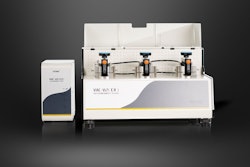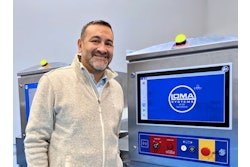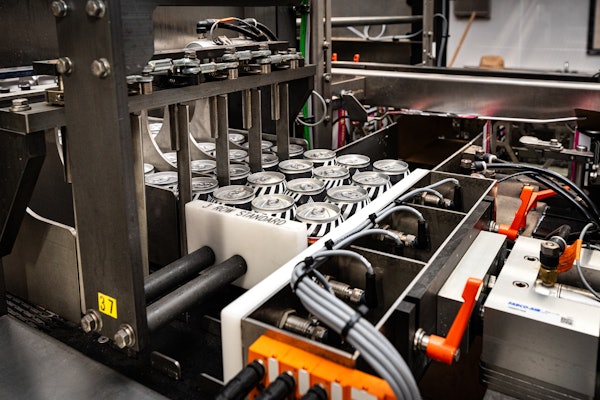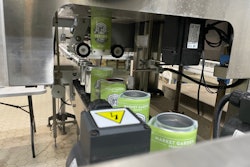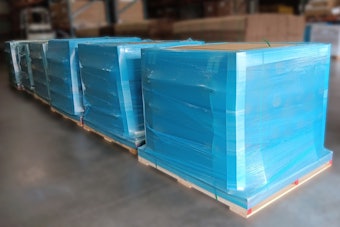Welcome to Package This, your guide to packaging machinery and materials.
Today we will zoom in on the fascinating world of packaging inspection systems – the critical quality control equipment that ensures foods, beverages, and other packaged goods meet safety standards and consumer expectations before they hit the store shelves.
They run the gamut from camera-based inspection systems to machines that check package weights, so be sure to stick around for the entire video on this technology, which is essential to countless packaging lines.
Vision Inspection Systems
First up are vision inspection systems. These systems use cameras and imaging technology to spot post application defects—both in the products in the package and in the packaging itself.
Here we see vision inspection systems from Silgan, designed specifically for beverage bottling lines.
For closure inspection, it performs 360-degree inspection after product leaves the capper, confirming proper cap application and finding low fills; cocked, missing, high and slanted closures; missing or broken tamper evidence bands; or missing foil.
For label inspection, the system also provides 360-degree inspection after the container leaves the labeler, confirming correct label placement and identifying any problems on round and square bottles, such as missing, high, low, and torn labels.
These Silgan inspection systems can be mounted directly above existing conveyor systems without having to interrupt the packaging line, saving valuable floor space. The software comes ready to use on beverage production lines with a user-friendly interface, so no complex configuration is required.
Metal Detectors
Metal detectors inspect packaging for metallic foreign matter that could pose safety risks to consumers. On packaging lines, these systems are typically positioned after filling and sealing operations to catch any metal contamination from broken machinery parts, loose screws, or processing equipment wear that may be introduced into a product, container or package.
They're particularly critical in food and pharmaceutical packaging, where metal fragments could cause serious harm. Modern metal detectors can differentiate between various metal types and sizes while minimizing false rejects.
X-ray Systems
X-ray systems perform the same function as in the doctor’s office but find bad stuff in product or packaging. Emitting controlled radiation, these systems detect the presence of foreign substances or objects, identifying glass, stone, bone, and dense plastic contaminants that metal detectors might miss.
On packaging lines, X-ray systems also verify product integrity by checking for missing components, broken items, or incorrect quantities. X-ray machines are especially valuable for detecting contaminants in opaque packaging where visual inspection isn't possible.
Fill Level Inspection Systems
Moving to bottling-specific equipment, let’s look at fill level inspection systems.
These machines use cameras and sensors to ensure uniform fill levels in bottles and containers for both dry and liquid products. These systems prevent costly recalls by catching underfilled or overfilled containers before they leave the facility.
They work by measuring the headspace in containers and can detect variations as small as a few millimeters. This technology helps maintain consistent product quality and meets regulatory requirements for the accurate fill volumes that customers demand.
Cap Torque Testing
Cap torque testing equipment measures the rotational force applied to screw caps on bottles, jugs, jars, and other containers during the capping process. This inspection helps define proper machine tolerances so capping equipment can be calibrated to avoid bottle damage from over-tightening or product leakage from under-tightening.
Cap torque testers provide can be set up offline or inline for real-time feedback so that operators can optimize capping machines to maintain optimal torque levels throughout the production run.
Cap, Lid & Flap Detection
Our next two categories focus on seal integrity.
Cap, lid, and flap detection systems use machine vision and other tools to ensure that closures are in place and properly aligned. They catch issues like missing caps, crooked lids, or open carton or case flaps that could affect product quality or safety. On fast-moving packaging lines, these systems provide instant feedback and are integrated with automatic rejection equipment that removes faulty packages right away.
Thermal Scanners
Thermal scanners also check seal integrity but do it using infrared and other thermal imaging technologies. They measure heat patterns on the surface of packages to find temperature differences that may signal weak or incomplete seals.
This non-contact method is especially useful for heat-sealed packages and containers, where even tiny leaks can be a problem. Because it can detect issues invisible to the eye, thermal scanning is essential for protecting product quality in sensitive applications.
Checkweighers
Finally, it’s time to check the weight of each package before shipping—and that’s where checkweighers come in. These machines weigh individual packages to make sure they meet the specified limits. They’re key for quality control and regulatory compliance. Checkweighers catch underfilled packages that might trigger complaints, and overfilled ones that drive up costs.
In doing so, they also help flag upstream issues that need to be addressed. Many models automatically reject out-of-spec products and connect to data systems to monitor weight trends over time.
And that's it for our look at packaging inspection equipment! We hope you’ve enjoyed seeing how packaging inspection systems work behind the scenes to ensure every package that reaches consumers meets the highest standards of quality and safety.
Before you leave, subscribe to Packaging World's YouTube channel and catch all of our videos in the Package This series.
And if you're in the market for inspection equipment or any other type of packaging machinery, bookmark PMMI ProSource at ProSource.org. It’s a searchable directory with over 1,000 packaging and processing solutions from North America’s top suppliers.
Thanks, and until next time, keep on packaging!



